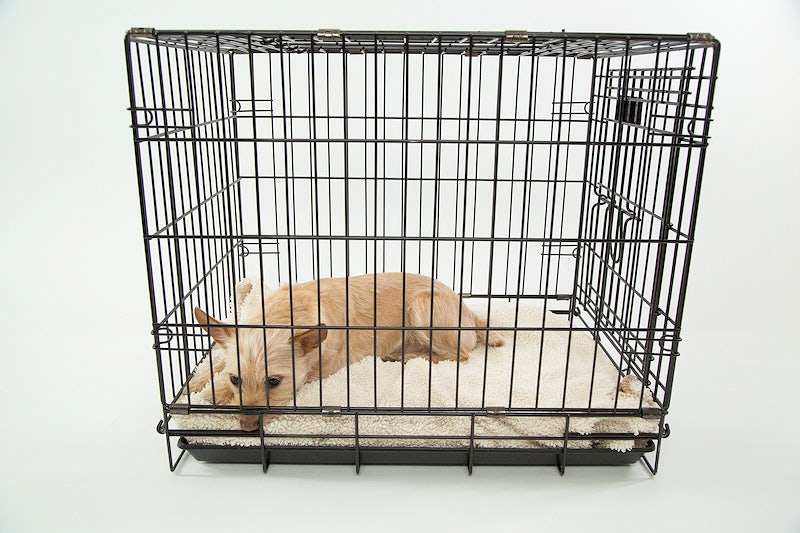
Crate training can be a valuable tool in your dog’s training and overall well-being. When done correctly, it creates a safe and secure space for your furry friend, provides them with a sense of comfort, and aids in various aspects of their development. In this blog post, we will explore the benefits of crate training and provide you with guidance on introducing a crate, making it a positive space, and helping your dog feel at ease inside.
Benefits of Crate Training:
- Security and Comfort: Dogs have a natural denning instinct, and a crate mimics this instinct by providing them with a cozy and secure space they can call their own.
- Housebreaking Aid: Crate training can be a powerful tool in housebreaking your dog. Dogs naturally avoid soiling their sleeping areas, so a properly sized crate encourages them to hold their bladder and bowels until they are taken outside.
- Traveling and Vet Visits: Crate training makes travel and vet visits safer and less stressful for both you and your dog. A crate-trained dog is more likely to view their crate as a familiar and comforting space in unfamiliar environments.
- Preventing Destructive Behavior: Crating your dog when you’re unable to supervise them helps prevent them from engaging in destructive behaviors, such as chewing furniture or getting into hazardous items.
Guidance for Crate Training:
- Introducing the Crate:
- Gradually introduce the crate by placing it in a quiet area of your home.
- Make it inviting by adding soft bedding, toys, and treats inside.
- Keep the crate door open initially, allowing your dog to explore and enter voluntarily.
- Positive Associations:
- Use treats and praise to reward your dog whenever they voluntarily enter the crate.
- Feed your dog inside the crate to create positive associations with mealtime.
- Offer interactive toys or long-lasting chews to keep them occupied and entertained while in the crate. Learn more socializing tips by reading our puppy socialization article.
- Gradual Enclosure:
- Start closing the crate door for short periods while you’re present.
- Gradually increase the duration, always ensuring your dog remains calm and comfortable.
- Avoid rushing the process; each dog adjusts at their own pace.
- Alone Time and Gradual Departures:
- Begin leaving your dog alone in the crate for short intervals while you’re at home. Read our article on separation anxiety for more information on handling that behavior.
- Practice gradual departures, starting with just a few minutes and gradually increasing the time.
- Create a calm and soothing environment by playing soft music or using a pheromone diffuser.
External Links for Further Reading:
Conclusion: Crate training, when approached with patience and positive reinforcement, can be a valuable tool in your dog’s training journey. It offers numerous benefits, including security, housebreaking assistance, and stress reduction during travel or vet visits. By following the guidance provided in this blog post, you can introduce your dog to their crate, create a positive association, and help them feel comfortable and secure inside their own special haven.
Remember, every dog is unique, and crate training may take time and adjustments based on their individual needs. With consistency, positive reinforcement, and a focus on creating a positive environment, you can make crate training a positive experience for both you and your beloved canine companion.




















